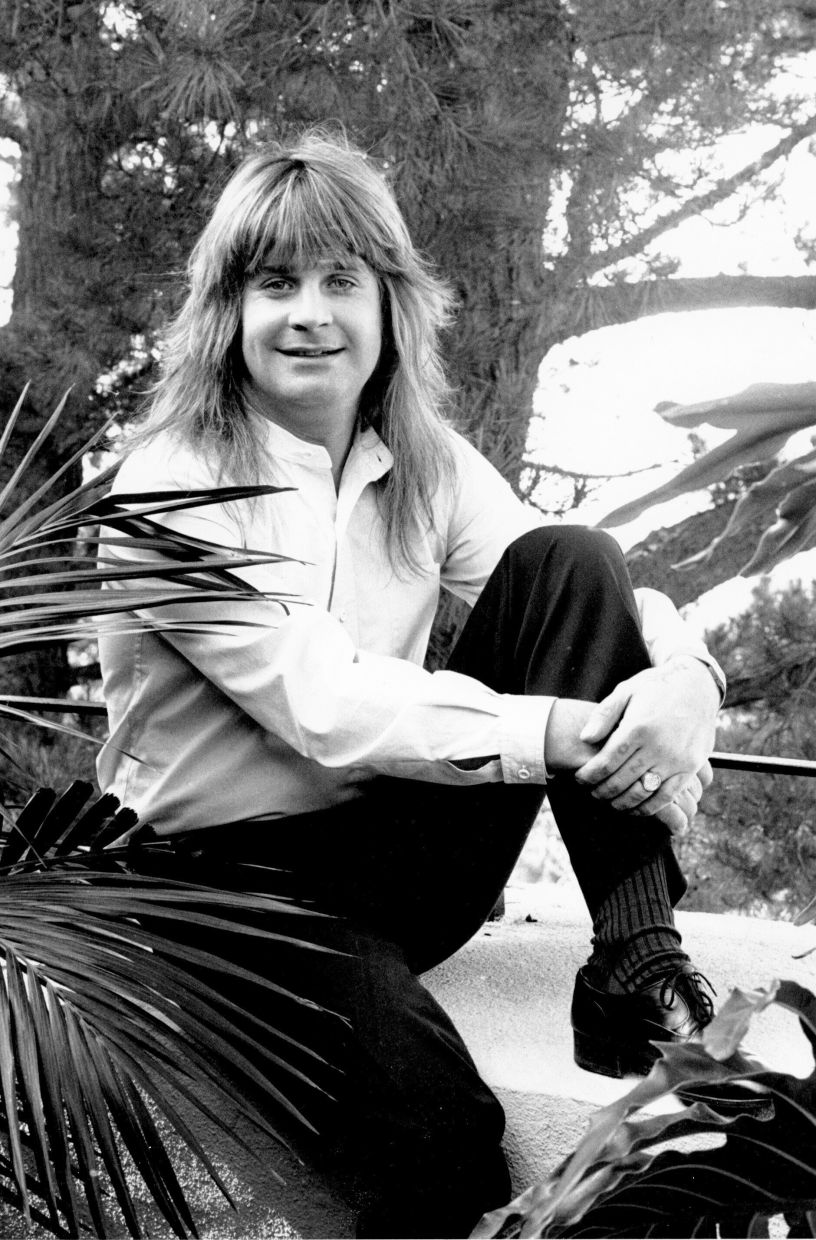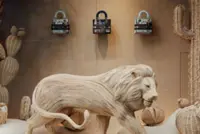A file picture shows Ozzy Osbourne speaking to the media in 2009. Photo: Reuters
His journey from small-time criminal to heavy metal’s comic Prince of Darkness started with clothes.
Growing up in Birmingham, England, Ozzy Osbourne didn’t see much of a future for himself, so he decided to give it a go as a cat burglar. His main target, according to his 2009 memoir, I Am Ozzy, was a clothing shop not far from home.
On his third attempt, he recalled, “I managed to nick some shirts.”
But he was arrested soon afterward and sent to Winson Green Prison, a century-old facility that looked like a medieval fortress.
His six-week jail stint caused him to reconsider his plan to become a career criminal.
He took jobs in an auto parts factory and a slaughterhouse. Inspired by the Beatles, he wanted more than anything to join a rock-n-roll band.
The first step he took toward this unrealistic-seeming goal was to change his appearance.
“I didn’t even know anyone who could play a musical instrument,” he recalled. “So, instead, I decided to grow my hair long and get some tattoos. At least I’d look the part.”
Read more: Music you can ‘see’? Rhythm and beats are now visible through fashion
He was the same age as many of the young people who wore bright, flowing garments during the so-called Summer of Love, but he detested flower power.
When he finally joined up with some old schoolmates to form Black Sabbath, he made his way toward a style that represented a dramatic departure from the cheerful hues favoured by the tie-dye crowd.
The hippies liked soft fabrics that reflected an innocent view of a world, where peace and love would win out in the end. Osbourne favoured capes and heavy boots. He had gone to jail, not college.
It took him a while to find a style that worked, especially before the money rolled in.
“I’d walk around in an old pyjama top for a shirt with a hot-water tap on a piece of string for a necklace,” he wrote in his memoir.
“You had to use your imagination. And I never wore shoes – not even in winter. People would ask me where I got my ‘fashion inspiration’ from and I’d tell them: ‘By being a dirty broke (expletive) and never taking a bath.’”
All the members of Black Sabbath came from Aston, the same blue-collar Birmingham neighborhood as Osbourne, parts of which were reduced to rubble by German air attacks during World War II.
The members’ look was as much an expression of their background as their music. A metal cross that Osbourne’s father, a toolmaker, made in his spare time for him became a key Black Sabbath accessory.
Osbourne, who died Tuesday (July 22) at age 76, would wear cross pendants for the rest of his life.
There was always a touch of irony to the look and sound of Black Sabbath, and when he performed live, Osbourne was a light-spirited presence, a friendly ringleader for his audience of misfits.
So he was surprised when some actual Satanists asked the band to perform during a ritual at Stonehenge.
Black Sabbath made use of the trappings of horror in the manner of George Romero and other film directors who understood that people are entertained by grim fantasies. The clothing was part of the act.
With its hard, sludgy sound, and songs like War Pigs and Paranoid, Black Sabbath frightened parents and made very little sense to the critics who had sung the praises of Bob Dylan and the Beatles.
But there was an upside to the lack of approval from the establishment.
It meant that the young rock fans of the 1970s had Black Sabbath all to themselves, and the band’s horror-inspired look became a style staple of teenagers from the Midlands of England to the American Midwest.
Some of those fans would start heavy metal bands of their own, and the style pioneered by Osbourne inspired the fashions of Iron Maiden, Megadeth, Marilyn Manson and any other heavy metal act with a sense of the theatrical.
In 1979, Osbourne was kicked out of Black Sabbath, with his bandmates saying that his substance abuse had made him unreliable.
In the next decade, he embraced the Gothic look with a sense of camp, making black his main colour as he became known as the Prince of Darkness.
That nickname seemed especially apt when he bit the head off a bat during a concert in 1982, even if he had been under the mistaken impression that it was a toy, rather than an actual animal.
Read more: Through adversity, a new aesthetic: The Princess of Wales’ fashion evolution
As Osbourne’s solo career continued, tinted round eyeglasses joined his ever-present cross as his signature accessories.
That look continued to serve him well when he became an unlikely reality television star in the early 2000s, playing a befuddled father and husband on MTV’s The Osbournes.
For four memorable seasons, he looked as if he had just stepped out of the underworld, a style made all the funnier when he had trouble operating the remote.
Osbourne dressed evil. But he was in on the joke. – ©2025 The New York Times Company
This article originally appeared in The New York Times.








